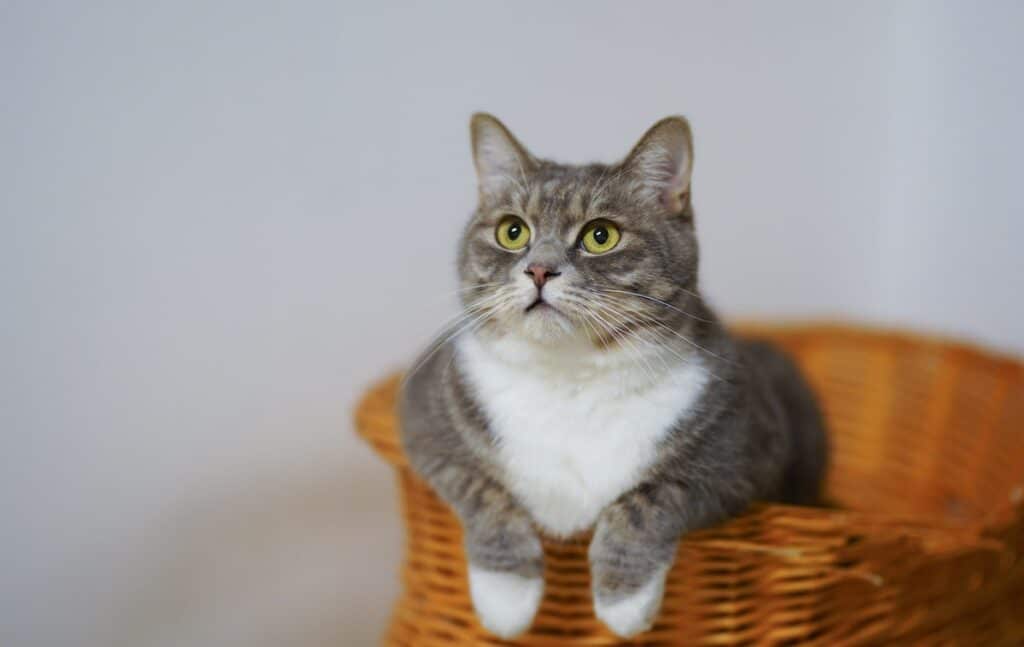Cats are so interesting. They are unique in so many ways, from their peculiar tail talk to the way their whiskers aid in navigation. Even though, we’re constantly working to comprehend how they function. Few activities are as perplexing as a cat coming to you in search of a mate—with all that writhing, screeching, and butt-wiggling! Do cats also have periods if these are some signs that they are ready to settle down, become pregnant, and start a family? The answer isn’t exactly clear-cut, as is the case with most things in a cat’s world.
Do Female Cats Get Periods?
Owner of the Mid-Atlantic Cat Hospital and Feline Thyroid Center in Queenstown, Maryland, and incoming 2022 president of the American Board of Veterinary Practitioners is Renee Rucinsky, DVM, DABVP(F). She claims that a menstrual cycle as we understand it in humans and canines is simply the regular shedding of the uterine lining in the absence of a pregnancy after ovulation. The reproductive process differs slightly in cats. She claims to Daily Paws that “cats don’t get periods in the sense that we know them.” “They undoubtedly share all the same hormones, but in contrast to humans and dogs, they do not instantly ovulate. Cats are induced ovulators, which means the male cat must stimulate them to ovulate.”
Induced ovulators include domestic cats and certain large wild felines, including tigers and cheetahs. Other big cats, like lions and leopards, are spontaneous ovulators, which implies that, like humans, their hormones initiate ovulation first. When a cat experiences hormonal surges, popularly known as being in heat, there is also no bleeding, according to Rucinsky. “Female cats are ready to ovulate when they mate during the heat cycle, and their hormones cause them to be in the mood for love.” This cycle may also be referred to as cat estrus by your vet.
What Are Cats in Heat Like?
Your furry girl starts to flirt at this point. Felines of all sizes emit unique pheromones that they use to communicate with one another and with other animals in their environment. They come out of numerous smell glands that are found in the anus, paws, cheeks, mouth, lower ears, forehead, and other sections of the body. For instance, when your cat headbutts you, she is showing you affection, yes, but she is also leaving a mark to inform everyone else who you belong to and to contact her for more information.
Is your indoor cat now eagerly awaiting your arrival at the door? She may be trying to leave a pheromone message on the doorjamb to signal to possible suitors that she loves you in addition to the fact that she loves you, depending on her age. Female cats in heat are not admirable young ladies, you know that.” claims Ruinsky. They might behave a little wild, roll about on the floor, vocalize a lot, and possibly waggle their booty at anyone. They might try to attract a male cat. Aah. Now that we fully comprehend the cause of that specific behavior.
When Do Cats Get Their Period?
Consider the estrus cycle more like the peak of a hormonal surge rather than a cat period, as Rucinsky suggests. When your cat sneezes or has blood in their feces, there may be another underlying medical issue that needs to be treated right once by a veterinarian.
What is Estrus in Cats?
Young females first enter heat when the hormones become active. According to the Merck Veterinary Manual, this can occur for the first time as early as 4 months of age. After that, you’ll see how she’s acting seductively to get a partner. According to Rucinsky, after mating with a male (also known as a tom), a female (also known as the queen) in heat ovulates and her hormones alter once more, causing her to exit the cat estrus cycle. She is presently pregnant.
How frequently do cats experience these hormonal peaks? If they are not spayed, a lot. Technically, says Rucinsky, “without breeding, the cycles are in around two-week loops. But from late winter to early fall, female cats may appear to be in heat practically continually. Yes, for almost a year—every two weeks!
They’ll probably experience another estrus cycle soon after their kittens are weaned and depart the house if they do have a litter and aren’t spayed afterward. An unspayed female can have three litters year on average. Rucinsky advises taking charge of the situation in order to protect your cat’s health and wellness.
“A female cat should ideally be spayed before going through an estrus cycle. Usually, this refers to infants younger than five months “In her advice, “She has a very high risk of developing malignant breast cancer in the future once those hormones truly start flowing during the first heat cycle. And the likelihood of that malignancy only keeps increasing with each succeeding cycle. The likelihood of this disease developing in spayed cats before their first heat cycle is quite low.”
Do Cats Know When You’re on Your Period?
According to Rucinsky, there is no “formal” information about cats being able to predict when their female owners are having periods. But kitties frequently appear to be able to tell when we’re depressed or ill, and they are perfectly happy to give us more comforting purrs and cuddles to help us feel better.














